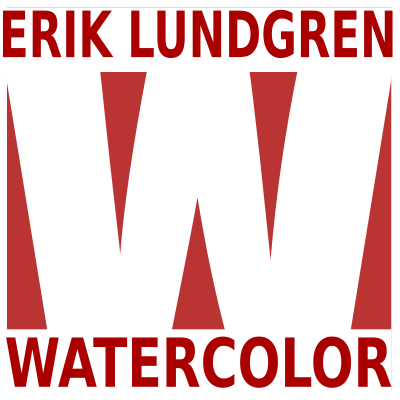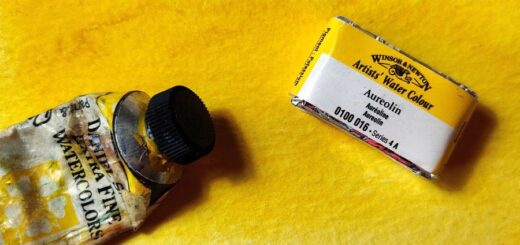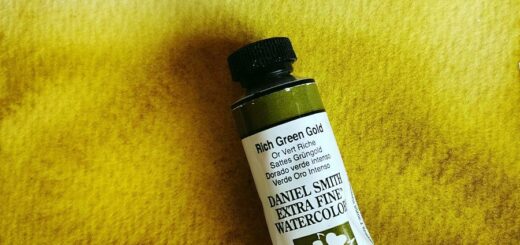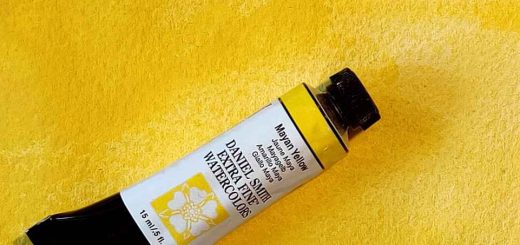Naples Yellow
August 20, 2025

There are many yellow pigments that have been consigned to history: Indian Yellow, Gamboge, Chrome Yellow and Massicot, to name a few. Even the once-common Naples Yellow belongs to this group. The genuine pigment has not been manufactured for commercial use for more than a hundred years, yet the name lives on in various imitations.
Genuine Naples Yellow (PY41) was a pigment known already in antiquity, but it was rediscovered in the 18th century. Throughout the 18th and 19th centuries it was a popular color in artists’ paints. The pigment was gradually phased out during the 19th century and disappeared altogether in the early 20th century.
The decline in use was not only due to its being difficult for watercolorists to handle: it was chemically unstable, reacted with and altered in combination with other common watercolor pigments, had uneven particle size which made it grainy and “powdery,” and it was not fully lightfast. The main reason, however, was that the pigment was toxic. In the early 20th century, the color was banned in many countries.
Chemically, the pigment is lead antimonate, and since both lead and antimony are toxic, the pigment was highly poisonous. Although production of the pigment has almost ceased, Naples Yellow can still be purchased, but now (almost) only as imitations. (There are manufacturers of historical paints that provide the real thing, such as Wallace Seymour Vintage Watercolours, but I wouldn’t buy the paint myself). I find it curious, but paint makers cannot abandon such an established name; it must live on, even if only as pale copies of the original.
Naples Yellow is a warm, creamy yellow with high opacity. The original pigment existed in two versions: a light yellow with a slightly warm cast, and a darker, more orange shade. This is the reason modern mixtures are often produced in both light and deep versions. The light color sometimes has the addition “Light” in the name (for example: Schmincke Horadam Naples Yellow Light), while the darker version is often called “Deep” (for example: Winsor & Newton Naples Yellow Deep).
Modern watercolors sold under the name Naples Yellow are in fact most often Chrome Antimony Titanate (PBr24), a synthetic pigment that produces an opaque yellow–orange resembling a light, opaque ochre. Other Naples Yellow paints, made from different pigments, usually contain some type of yellow, sometimes combined with red or brown.
The vast majority of Naples Yellow variants contain white pigment. Out of 100 paints bearing the name Naples Yellow, 72 are mixed with white according to artistpigments.org. This makes the paint opaque and gives it a chalky appearance.
No comprehensive overview of opacity, blooming, wet-in-wet behavior, or hue can be made for Naples Yellow. All the paints sold under this name are so different in properties, appearance, and composition that such a description would be meaningless.

Élisabeth Vigée Le Brun (1755–1842) – portraits of Marie Antoinette and other court ladies have been identified with Naples yellow in bright yellow silk dresses.












